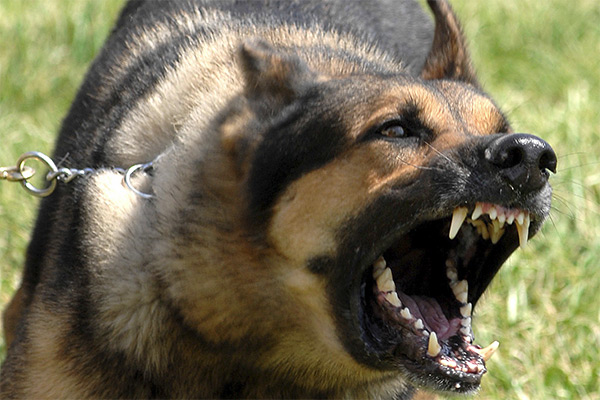Defense Against Dogs
How to protect yourself from dog attacks in various situations
Understanding Dog Attacks & Defense
By Peter Vermeeren
As a dog trainer and handler, I'm often asked about self-defense against dog attacks. While there's no one-size-fits-all solution, this guide can help you understand and prepare for various scenarios.
Understanding Dogs & Their Owners
Different combinations of dogs and owners create different risk levels. Problematic situations often arise from owners who:
- Got themselves a dog to show off
- Don't understand the needs of a dog
- Treat their dog as if it were human
- Need a dog to boost their ego
- Selected the wrong dog for their situation
Different breeds of dogs were bred for different purposes. A Maltese will never attack the same way as a Bloodhound. Their purpose and body size are completely different. However, every dog has its own character and temperament regardless of breed.
Important Note
When buying a dog, be clear about your purpose: Do you want a guard dog (defense), an attack dog, or a companion? Matching the breed to your needs is essential for safety.
Dogs Often Labeled as "Dangerous"
Media often portrays certain breeds as dangerous. These typically include:
- Rottweiler
- German Shepherd
- Pit Bull
- Doberman
- Bulldogs
- Alaskan Malamutes
- Siberian Huskies
- Great Danes
These dogs are often blacklisted because they're working dogs of considerable size and weight. However, statistics show people are attacked more frequently by terriers than blacklisted dogs. The primary difference is in the damage caused: a 45kg dog with a bite pressure of 750kg per square centimeter causes far more damage than a small 3kg dog.
Defense Strategies for Different Scenarios
Trained Police Dogs
If you're certain it's a trained police dog, stand still and don't move. They're trained to bite when you flee or resist. Lie down on the floor face down or stand still with your hands up. These dogs recognize these signals and are the easiest to deal with.
Untrained Dogs
Depending on the breed, untrained dogs target different areas:
Arm Protection Method: Wrap your arm in your jacket and offer it to the dog. There's a 60% chance it will go for it. When it bites, resist slightly to make it tighten its grip, then fall on top of the dog and immobilize it with your forearm (still in its mouth). In extreme danger, you may need to take defensive action to disable the dog.
For larger dogs like Rottweilers, they'll often aim for your legs. They may be reluctant to jump up to grab your arm. If they try, kick defensively while facing the dog. Never turn to run away – this excites them and triggers hunting instincts. Call for help, scream to attract attention, and try to find stones or sticks to throw.
Barking Dogs
"Barking dogs don't bite" is somewhat true. A dog barks to warn you or to hide its own fear.
The Bold Approach: If a lone dog is running toward you while barking, try running toward it, making noise and swinging your arms to appear larger. This may scare off the dog (73% chance if the dog is barking, only 23% if silent).
Partially Trained Dogs
The most dangerous category is partially trained dogs. They don't respond to commands or recognize obvious signals. They're confident enough not to be scared away but aren't trained to stop when the victim stops resisting. These cause the most injuries and are hardest to defend against. The same tactics for untrained dogs apply, but be aware these dogs may be trained to bite shoulders or genitals.
Multiple Dogs
If multiple dogs attack, the situation is extremely dangerous – similar to a wolf pack. They hunt in groups, with some attacking while others circle to attack from behind. Put your back against a wall or car, find a stick to keep them at bay, and call for help immediately.
Recommended Defense Tool
Pepper Spray: The Best Option
The most humane and effective defense against any dog attack is pepper spray. Regular sprays sold locally work fine. They're affordable, come in various sizes, are easy to carry, and work against all types of dog attacks. They're relatively harmless to the dog while giving you time to escape. When walking in parks or areas with potential dog encounters, always carry pepper spray.
About the Author: Peter Vermeeren is a traditional martial arts teacher with over 30 years of experience. His websites can be found at takaharudojo.org and kamikaze-portal.com
Source: www.isnare.com | Permanent Link: isnare.com/?aid=9700&ca=Family+Concerns

Quick Tips for Dog Encounters
- Stay calm and avoid sudden movements
- Never run away from a threatening dog
- Avoid direct eye contact which can be threatening
- Stand sideways to appear less threatening
- Put an object between you and the dog if possible
Understanding Dog Body Language
Recognizing warning signs can help you avoid attacks:
Raised hackles (hair on back)
Stiff tail or fast wagging
Tense body posture
Showing teeth or growling
Learn More Self-Defense Techniques
Our women's self-defense course has helped thousands of women since 1988. The increased confidence and practical skills make this short investment of time worthwhile.
Related Articles
Expand your knowledge with these additional safety resources

Self-Defense Awareness & Tips
Learn practical safety strategies for your home, car, and personal security in various situations.
Read More
Miss USA on Self-Defense
Read about Miss USA Nia Sanchez's stance on why self-defense training is crucial for women's safety.
Read More
Safety Tips for Young Women
Essential advice specifically for young women on staying safe in social situations and everyday life.
Read More